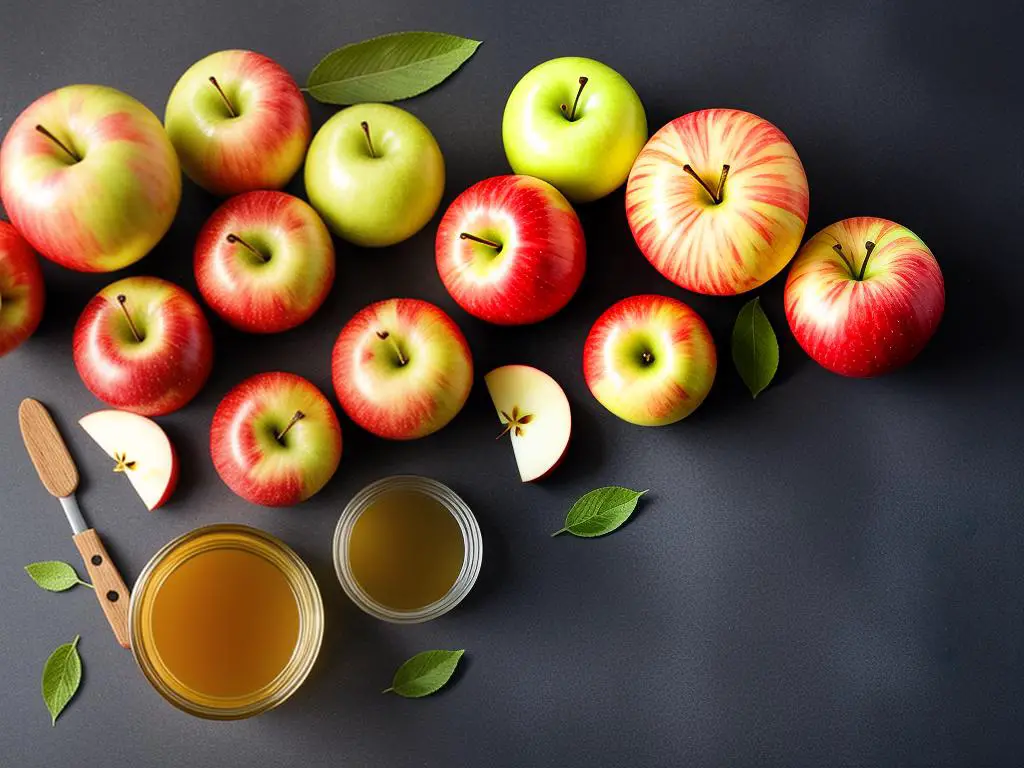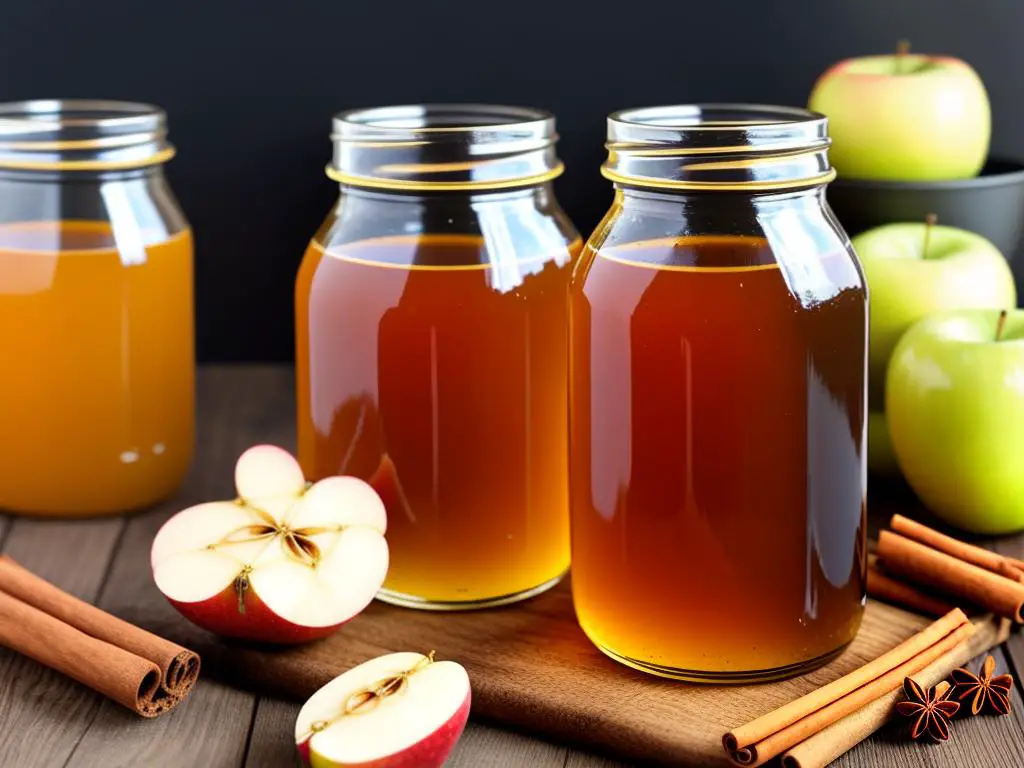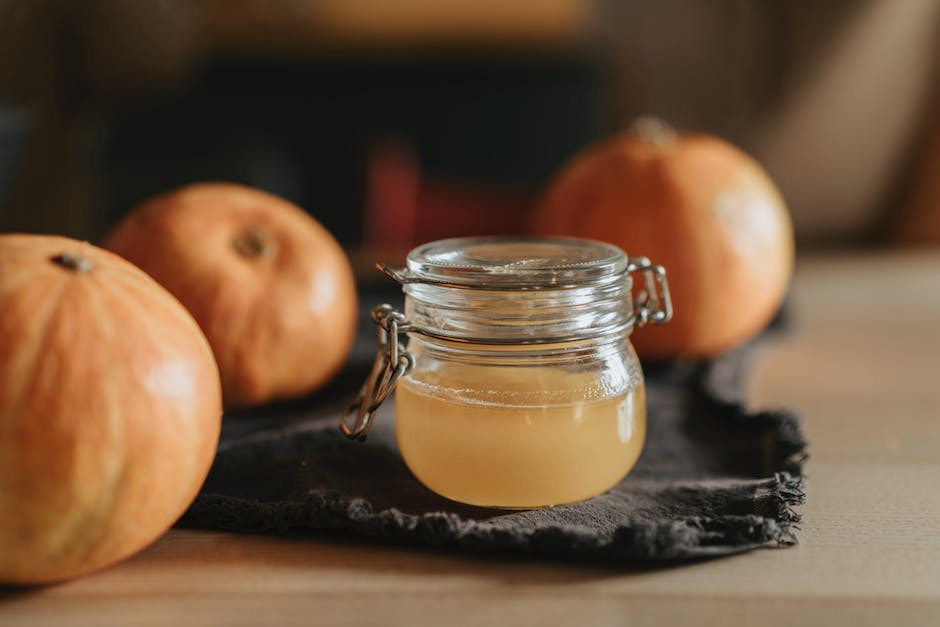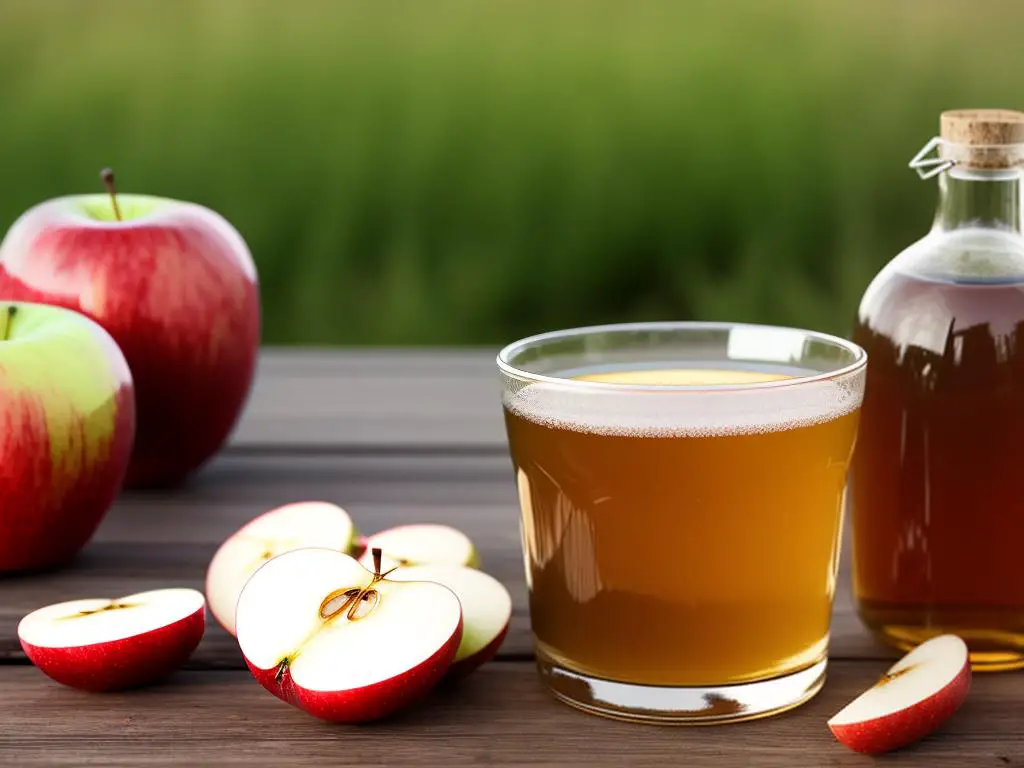In our daily life, the use of apple cider vinegar has become widespread due to its spectrum of health benefits and culinary applications. Understandably, many enthusiasts and hobbyists have shown a keen interest in knowing if there’s a taste difference between the homemade and store-bought varieties. The ambition of this essay is to delve into this question, initially unravelling the core components that lend apple cider vinegar its distinctive taste, and then guiding enthusiasts on how to prepare homemade apple cider vinegar that matches, or perhaps even surpasses the commercial versions in terms of flavor.
Understanding the Nature of Apple Cider Vinegar
Overview of Apple Cider Vinegar
Apple cider vinegar, also known as ACV, has been popular as a home remedy for various health conditions due to its health-promoting properties. It is produced by fermenting the sugars in apples through a process that involves yeast and bacteria. The sugars are first converted into alcohol by yeast, and then the alcohol is converted to acetic acid by bacteria, resulting in a slightly tangy and sour liquid known as apple cider vinegar.
In a commercial setting, production is regulated and standardized to ensure consistent taste and quality. Commercial apple cider vinegar tends to have a uniform, well-defined taste with a consistent level of acidity. The vinegar is typically filtered and pasteurized, which can reduce the presence of the ‘mother’—a combination of yeast and bacteria that forms during fermentation.
Making Homemade Apple Cider Vinegar
On the other hand, creating homemade apple cider vinegar involves a more straightforward, natural process. It requires simply combining raw apples (or apple scraps) with sugar and water in a jar, then allowing nature to take its course. The mixture undergoes natural fermentation as it sits at room temperature. Throughout the fermentation process, the apples and sugar are transformed into apple cider, which eventually becomes vinegar when exposed to air. The process can take anywhere from two to six months, depending on the environment.
Homemade apple cider vinegar generally retains the ‘mother’, resulting in a cloudier but more nutrient-rich product compared to its commercial counterparts. You may notice fine strands or sediment in your homemade vinegar, and this is perfectly normal—it’s the ‘mother’, which is believed to contain many of the nutritional benefits of ACV.
Exploring the Taste of Homemade Apple Cider Vinegar
Can homemade apple cider vinegar taste unique compared to store-bought versions? Indeed, it can. The flavor profile of homemade apple cider vinegar can shift dramatically depending upon factors such as the variety of apples used, sugar content, and fermentation duration.
One of the standout elements that determines the taste of homemade vinegar is the variety of apple used in its creation. Each apple type brings with it distinctive flavors and sugar content. For instance, employing Granny Smith apples might yield a crisp, sour vinegar, conversely, Fuji or Honeycrisp apples may yield a sweeter brew.
The role of sugar content in affecting your vinegar’s balance is crucial. Generally, the more the sugar, the higher the acidity post-fermentation, instilling a sharper bite to your vinegar.
Furthermore, the taste of homemade vinegar can progressively enhance and intensify. The lengthier the fermentation time, the more robust and intricate the flavor profile. The unique advantage of homemade apple cider vinegar is the scope to experiment with various fermenting durations to develop your preferred taste.
In conclusion, homemade apple cider vinegar provides a distinct, wholesome tasting experience. Owing to its unfiltered, rustic quality, its flavor is richer, and can have a subtle sweetness from the apples, while offering a milder acidity compared to its commercial counterparts. Unlike the consistent flavor of commercial apple cider vinegar, homemade vinegar presents a more exotic taste adventure.

Making Apple Cider Vinegar at Home
Creating Homemade Apple Cider Vinegar: Simple Steps, Remarkable Flavor
Creating homemade apple cider vinegar is an engaging, economical hobby that results in a superior product. Let’s delve into the reasons why the taste of homemade apple cider vinegar stands out, and how you can easily craft your own.
Why Homemade Apple Cider Vinegar Tastes Different
One of the main reasons that homemade apple cider vinegar tastes different is due to the quality and types of apples used. Commercial apple cider vinegar is often made from lower-quality apples or, in some cases, apple concentrate, leading to a less flavorful final product. On the other hand, homemade apple cider vinegar can be made using your preferred apple varieties, resulting in a more robust and appealing flavor.
Furthermore, the length of fermentation and the use of a “mother” (the cloudy blob in unpasteurized vinegar that hosts the necessary bacteria for fermentation) can influence the taste of the vinegar. A longer fermentation period can lead to a stronger, more complex flavor, while the “mother” in homemade apple cider vinegar introduces beneficial bacteria that give the vinegar a unique taste.
Ingredients and Equipment for Homemade Apple Cider Vinegar
The ingredients for making your own apple cider vinegar are relatively simple: organic apples, filtered water, and sugar or honey to kickstart the fermentation process. Aside from the ingredients, you would need wide-mouth mason jars for the fermentation process, a piece of cloth or coffee filter to cover the jars, and rubber bands to secure the covers.
Steps to Make Apple Cider Vinegar at Home
To start making your own apple cider vinegar, first cut your apples into chunks and put them into your jar, filling about half of the jar. Add one or two tablespoons of sugar or honey and fill the remainder of the jar with filtered water. Stir everything together well and cover the jar with the cloth or coffee filter, secure it with a rubber band.
Next, store the jar in a dark, room temperature place for about two weeks, stirring every few days. This allows the apples to ferment and the initial alcohol to form. After this period, strain out the apples and put the liquid back into the jar for another two to four weeks. You would probably see the formation of a “mother” at this time, a sign that your vinegar is forming. Once it has the taste and acidity you prefer, you can strain it (optional) and store it in a clean, sealed jar or bottle.
Different Takes on Homemade Apple Cider Vinegar
Based on the type of apple used, the amount of sugar or honey, and the length of fermentation, your batch of apple cider vinegar can vary greatly in flavor. Some prefer a milder flavor, using sweeter apples and a shorter fermentation period. Others might opt for a more robust and tangy flavor, using tart apples and a longer fermentation period. Multiple batches and experimentation will allow you to achieve your preferred taste.
In summary, concocting your own apple cider vinegar (ACV) at home allows you to create a flavor uniquely tailored to your taste preferences. This homemade ACV could also prove to be healthier due to the presence of the “mother”. I recommend trying this at your own kitchen to truly understand and appreciate the difference in flavor!

Taste Difference between Homemade and Store-Bought Apple Cider Vinegar
A Comparative Analysis of Taste: Homemade vs. Store-Bought Apple Cider Vinegar
Homemade ACV has often been lauded for its superior taste and supreme quality in comparison to the store-bought versions. But what exactly contributes to this distinction in taste when it comes to homemade ACV?
A couple of attributes come into play here: the type of apples used, the method of fermentation, the period of aging, and the inclusion of distilled or extra ingredients that are commonly found in commercial variants. Let’s delve deeper into these aspects.
The Importance of Apple Varieties: Sweet vs. Tart
The choice of apples that go into the production of apple cider vinegar greatly influences its end flavor. When you’re making it at home, you have the full authority to choose the type of apples. Some might opt for a tangy twist with Granny Smith apples, while others might lean towards a sweeter flavor with a Honey Crisp or Golden Delicious. On the other hand, commercial vinegars are usually made from a concentrate derived from various kinds of apples, resulting in a more uniform or possibly lackluster taste profile.
Fermentation: The Flavor Catalyst
The fermentation process, where sugar from the apples is converted into alcohol, then into acetic acid by acetobacter bacteria, is at the heart of vinegar making. It is this acetic acid which gives vinegar its distinct sour taste and pungent smell. However, the duration and conditions of the fermentation process can impart different flavor notes to the resulting vinegar.
Homemade cider vinegar often undergoes a slower, cooler fermentation process that allows a nuanced variety of flavors to develop. Store-bought vinegar, however, is often made via rapid fermentation under warmer conditions to ensure quick production and stabilization of the final product, which can result in less robust flavor development.
Aging: A Time for Flavor Development
Time is a critical variable in the equation of ACV taste difference. An extended aging period allows for the development of complex flavors, giving the vinegar a deeper, richer taste. Homemade vinegars usually have the advantage of being allowed to age as long as the maker desires, which is usually not the case in the commercially made product. Store bought variants, for reasons tied to mass production, economy and product stabilization, don’t always enjoy the luxury of a long aging period.
Additional Ingredients and Distillation
Most commercial apple cider vinegars are filtered and pasteurized to give them a longer shelf life. This is in stark contrast to homemade versions, which are often left unfiltered and unpasteurized. This natural, raw condition hosts a colony of beneficial bacteria commonly referred to as “the mother,” which many believe to add beneficial health properties and subtle taste complexities to the vinegar.
Additionally, some commercial ACVs have additional ingredients like water, sweeteners, or preservatives which can dilute or alter the overall taste.

The exploration and understanding of the subtle but noticeable differences in the taste of homemade and commercially available apple cider vinegar are subject to individual preferences and the methods employed during the making process. As concluded in this analysis, the manipulation of variables in the homemade process, like fermentation length and ingredient quality, can yield a flavor that is both unique and unmatched. May this journey of discovery into the world of apple cider vinegar inspire and empower enthusiasts to experiment at home and perhaps create a brew that truly reflects their taste preferences.
